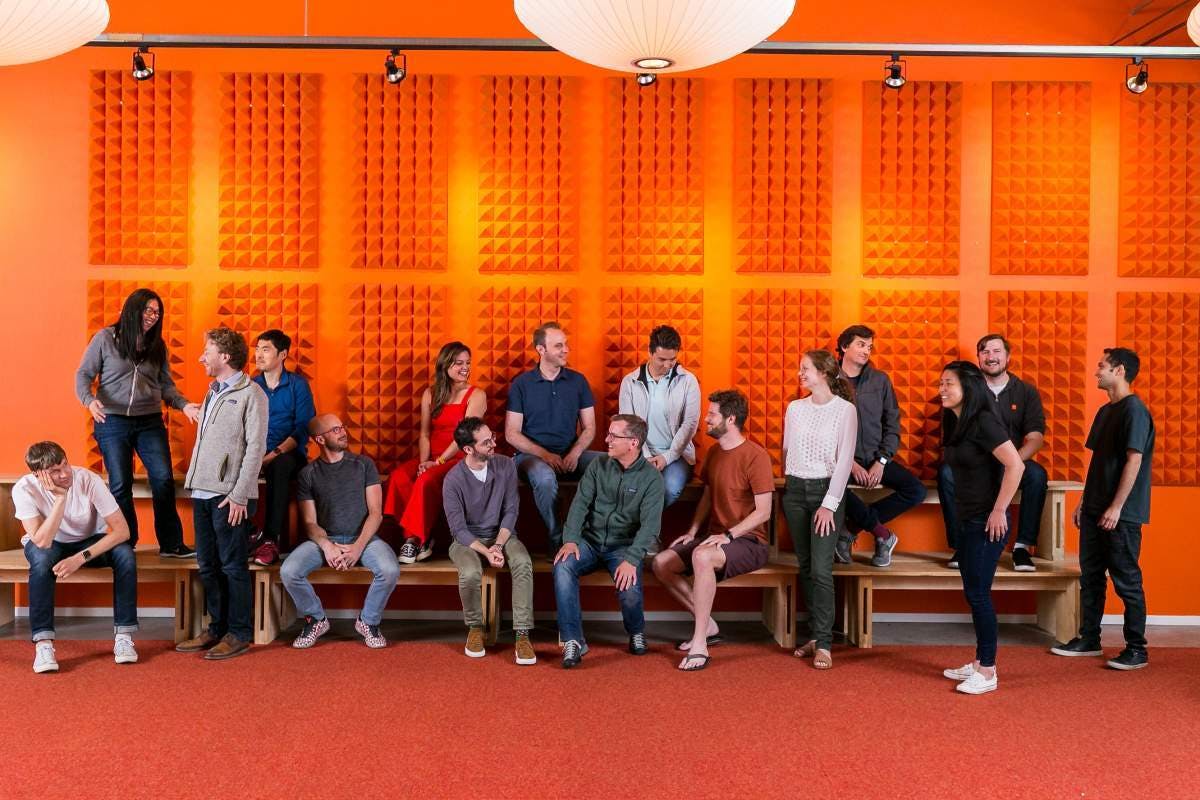Although sharing big ideas and drawing on whiteboards are both fun activities, people don’t just collaborate for the sake of collaborating. We do it because it’s necessary for getting work done.
Teamwork allows us to split up work to achieve goals faster and better. More people means more brains, more perspectives, more hands — which yields more impactful results. Yet the realities of what collaboration looks like has changed a lot over the last decade. Instead of popping our heads into each other’s cubicles in the office, we’re checking in on Slack or email. We’re assigning tasks in Asana or Jira. Sometimes, the overhead of collaborating feels like more work than the work itself.
Each day is feeling busier than the last, so it’s crucial that teams sharpen their collaboration skills so they can get to the core of what collaboration is supposed to do — help you accomplish things better and faster. Collaboration should mean working smarter, not harder.
We’ve got so many tools at our disposal (which can feel like a curse rather than a gift when it comes to choosing software…) But that means if our collaboration skills are on point, we can truly do anything. In this piece, we take a look at what the most critical collaboration skills are and how you can use them to stop spinning wheels with your team.
Let’s get collaborating 🤝
What are effective collaboration skills?
Collaboration skills are a way for your team to work together, productively and efficiently.
Indeed describes collaboration skills as a blend of interpersonal skills, communication skills, knowledge sharing and strategy. What makes effective collaboration skills unique — and harder to come by — is that they require mixing skills like setting goals and objectives with personal attributes, such as trustworthiness and open discussions. Superman? Maybe.
Successful collaboration hinges on how comfortable your team is talking with each other and working on tasks through honest discussions. As Forbes’ Carol Goman explains, collaboration is not a “nice to have” philosophy; it’s an essential ingredient for a company’s survival and success.
"It’s not just corporate profits that suffer when collaboration is low: the workforce loses something too," she says.
"Individuals lose the opportunity to work in the kind of inclusive environment that energizes teams, releases creativity and makes working together both productive and joyful."
The link between collaboration, productivity, and profits isn’t an accident. A recent study of 1100 companies by the Institute for Corporate Productivity found collaborative work is five times more likely to end with higher performance. The study found organizations that were achieving higher performances had something in common: open, collaborative cultures where teams were grounded in a core purpose. So the old adage is true: two heads really are better than one.
Once a company figures out what its main purpose is, their team can then rally around it and use it to encourage a more collaborative working environment. However, it’s important not to confuse collaboration with communication. Pinging a colleague on Slack about lunch isn’t collaborating, but if you’re brainstorming on a project — that’s a different story.
Collaborating is the act of working towards something, like:
🧠 Brainstorming: Your team needs space to share ideas and perspectives (and question others) while making decisions on projects.
🤝 Sharing skills: Cross-collaboration is becoming easier with tech, as engineers, designers and customer service teams share their skills across departments. If your team has people on it with various skills, they should be used to freshen up projects and spark new ideas
📖 Being open: Collaborating isn’t about lecturing, but it should encourage a healthy debate. By debating, your team can break down hierarchies and communication silos (which we will explain more later), which can ultimately make collaborating easier
Without collaboration and a clear sense of purpose, hitting goals is tough for any company. As Patrick Lencioni recently explained in his TED Talk, successful collaboration stretches beyond just a tech stack. It also hinges on teams being humble, ambitious and smart.
3 effective collaboration skills to work smarter
1. Sharpen your soft skills
Collaborating effectively goes beyond @mentioning a colleague in Slack.
According to LinkedIn’s Global Talent Trends 2019 report, soft skills now sit at the top of the list when it comes to the future of the workplace. While "hard" skills are tied to knowledge around a job, soft skills are typically attached to a person’s attributes. Soft skills are characteristics like:
🗣️ Talking with people openly and honestly
👂 Engaging and listening to others
🤗 Dealing with situations empathetically and with concern for others
👩💻 Feeling comfortable working in a diverse environment
A Harvard Business Review study of 55 teams found the most productive and innovative teams were led by people who focused on relationships and tasks. The evidence suggests that building relationships with your fellow team members can boost your chances at collaborating more successfully. Looks like taking that evening bingo is important to attend after all...
To hone your soft skills, the first step is getting comfortable with discussing ideas and projects in team debates. If you are in meeting room with your team discussing a project, a debate can uncover (innovative) goldmines: good ideas can float to the surface while not-so-good ideas can be put on a shelf.
Slack’s Minda Honey suggests the following three rules for a healthier in-house debate:
Be respectful: And open-minded. Ask questions, listen, and be curious. Respect leads to a better understanding of where your teammate is coming from
Stay polite: Being rude at work will get you nowhere. Defensiveness can cause breakdowns in debates and can lead to your colleagues losing a sense of belonging within your team
Keep positive: Feedback is a good thing. Instead of taking all feedback as negative criticism, keep positive so that you can more easily engage in debates
Not only can debates build stronger relationships and better more inclusive ideas, but figuring out where you agree and disagree will make collaboration easier.
2. Creating better communication
Communication is the foundation for collaboration, so it’s a no-brainer that better communication will help your team work more productively.
Communication relies on your team—as individuals—being comfortable and proactive in conversation. While someone might break out in a cold sweat at the thought of hosting a group meeting, another may relish the opportunity. This goes for non-verbal communication, too. A designer on your marketing team may aim to have a zero inbox every afternoon while your customer service lead is drowning in unanswered emails.
With better communication, teams can find ways to help each other and share the workload.
Let’s take the overflowing email inbox as an example 📧
It’s no secret that email wasn’t built for the way we work today. Its 1:1 approach isn’t collaborative, isn’t connected to the other apps, and the average person spends 28% of their working day reading and answering emails. Harvard Business Review’s Matt Plummersays most professionals now resort to one of two extreme coping techniques to survive the unending onslaught of email.
"At one end, there are the inbox-zero devotees who compulsively keep their inboxes clear, and, at the other, there are those who have essentially given up. Emails enter their inbox and remain."
Alas, there are ways you can limit the amount of time you spend each day on email, like:
Turning off notifications and checking your email at set times
Moving emails out of your inbox once they’ve been read
Utilizing the search function to find emails
Setting up two email folders and using shortcuts to archive emails there
Cutting out irrelevant emails (*cough* unsubscribing!)
Beyond these steps, there are ways teams can collaborate and tackle the email burden together.
Y Combinator runs multiple programs and events every year, each with its own email alias. The company also has inboxes for general inquiries, applications and other matters. In total, their staff is managing 20+ separate email aliases 🤯

Instead of drowning in emails, Y Combinator has turned the inboxes into everyone’s responsibility with the help of Front. Every email they receive is automatically assigned to the right partner using predetermined rules defined by keywords. The team also keeps its inbox under control by using:
@ mentions: Instead of forwarding emails, the team can @mention the relevant person to highlight a message. If they need help with a response, team members can also collaborate internally on an email draft before pressing send.
Message templates: A lot of emails landing in the Y Combinator inboxes were recurring questions. The company set up message templates to its team can quickly and accurately respond to these questions in 1-click without having to constantly rewrite them.
The result of Y combinator’s new approach to emails? They’re now responding to queries 7 times faster than in the past — thanks to their effective collaboration skills.
Pro-tip: Want to find out how much time you’re spending on email? Use this calculator to find out.
3. Working beyond communication "silos"
Finally, take an honest look at whether or not your team’s collaborative efforts are suffering because of "silos". A communication silo is where individual teams will talk and collaborate amongst themselves while forgetting about other departments.
If your company runs on cohesion, you need to knock those silos down. For example, shipping management companies need each department, from customer service to logistics, to work together in real-time. If the departments are blocked off from each other, it can hurt productivity and profitability.
Trello’s Lauren Marchesesays silos are created when there are differences in opinion and leaders in departments prioritize their own needs.
"This is another thing that can be alleviated with open and honest meetings – as opposed to just one or two executives as the only people who really know what’s happening company-wide," she says.
So, how can you knock down these proverbial walls?
The leaders of each department need to be on the same page. Silo mentality often grows from each team only seeing things from their perspective and making choices that will help their department. However, by sharing information and keeping everyone — no matter what team they belong to — grounded in a common goal, you can overcome this.
When logistics technology company Boxton was struggling with requests, approvals, and updates with shipments, they knew they needed a better way to collaborate. The company now uses rules, assignments and tags in Front so each shipment has its own request number.
As all of the communication from each shipment is kept in a single place, anyone can answer a query or follow-up on a problem no matter what department they’re in.
"Now that we’re remote, we’re using the assignments feature to make sure everyone knows what they’re responsible for replying to,” says the company’s CEO, Warren Kucker.
Take another look at your collaboration infrastructure
Effective collaboration skills are anchored in the strength of your team’s relationships and communication skills.
But your tech stack can still play a vital role in the overall success of team collaboration. If you invest in the right infrastructure, you can save 10 hours per person every week. While your team’s communication relies on how comfortable they are having open, honest conversations, the right tools can make this even easier.
As Facebook’s former CTO Bret Taylorsays, the future of modern productivity will rely on combining communication and content into a seamless experience. Taylor believes having chat, checklists, and live editing is the way of the future; having everything in one place will cut the time spent in email threads and help teams get back time spent in endless meetings.
That tool sounds like our collaboration pick — which is Front, of course 😉.
Written by Kimberlee Meier
Originally Published: 5 June 2020

